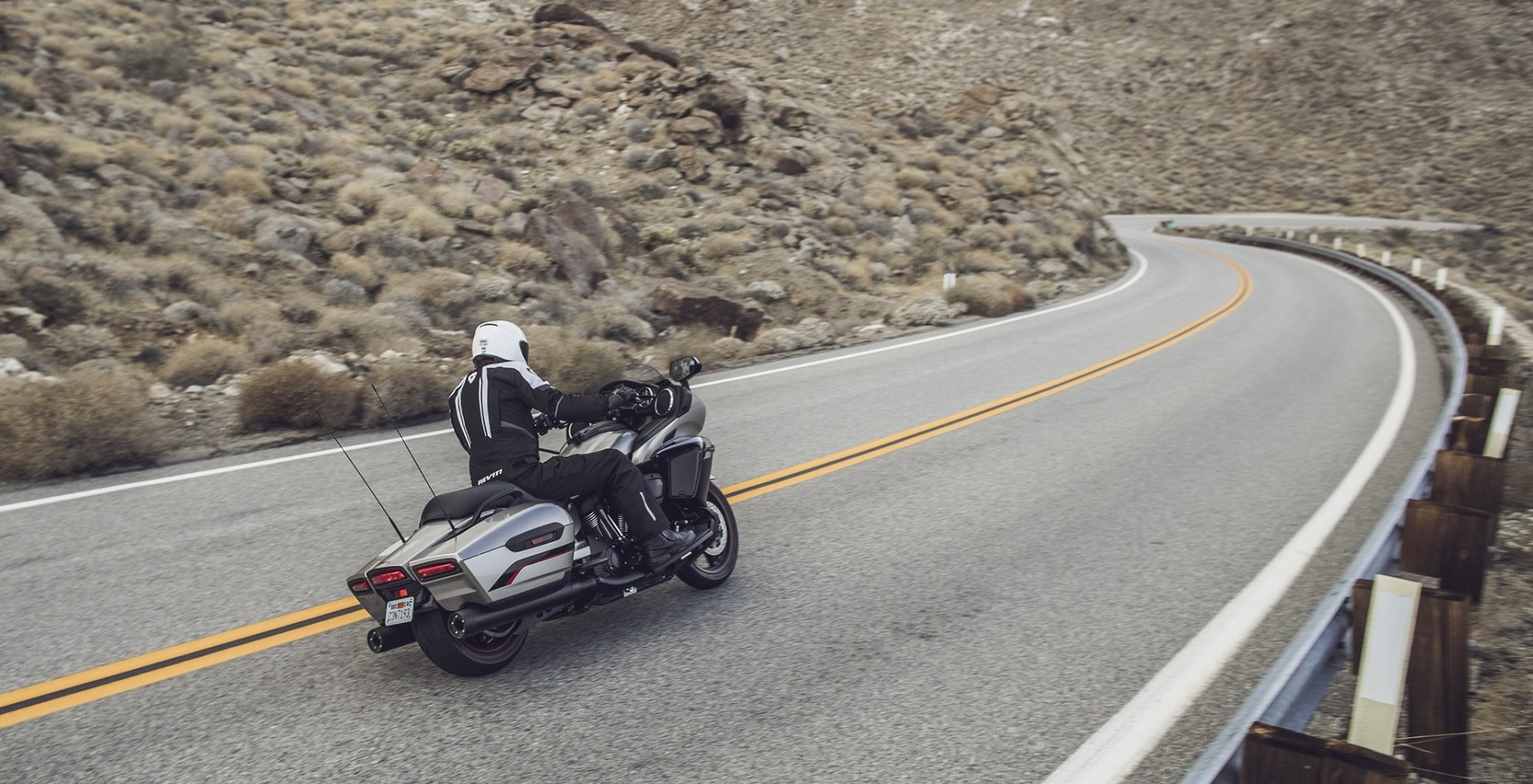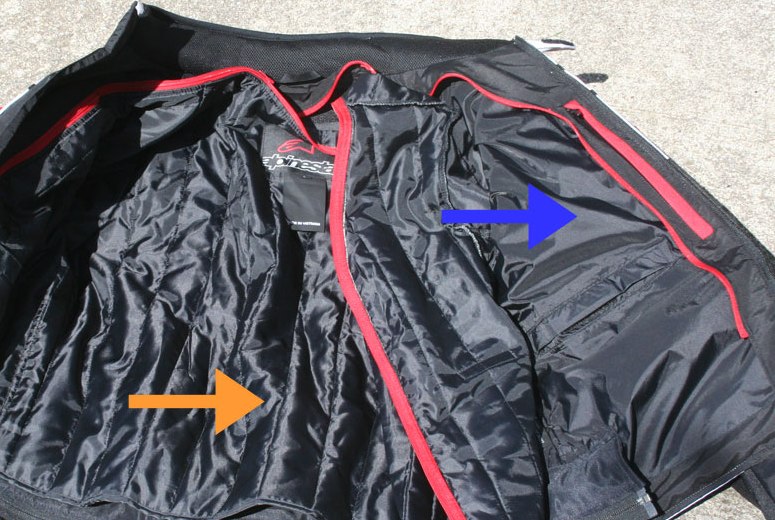This is the time of year when many of us take an anticipated long motorcycle trip, especially in this plague year when everything that hasn’t been canceled has been deferred or delayed. We’re also looking for opportunities to get out of the house while maintaining some distance from the possibly infected crowds. Anticipation is high, but before you set off for the middle of nowhere… are you forgetting something?

Remember to take these things with you on the road. Photo by Drew Ruiz.
Here are five things it’s easy to overlook or to think you won’t really need but could make a big difference when you’re far from home.
Gear for the weather extremes. If you’re taking a 30-mile afternoon ride close to home, you can probably count on the weather forecast and not have to prepare for extreme surprises. A multi-day trip is a different matter. I’m not only talking about unexpected changes in the weather, but also the normal variations due to topography that you can experience on a long trip. An example: During a one-day ride in October a few years ago from St. George, Utah, to Los Angeles, I went from 41 degrees in the morning starting out to 94 degrees that afternoon in Corona, California.
Be prepared for rain with a waterproof layer, especially if it could be combined with cold temperatures. Huddling under an overpass and shivering is no way to spend your vacation time.

A textile jacket with a removable thermal liner (orange arrow) and a built-in waterproof liner (blue arrow) is a versatile option. But I find I can handle wider temperature ranges and stay drier in heavy rain with the combination of a rain suit, mesh jacket and insulating mid layer.
A waterproof textile jacket with a removable liner may be enough to handle everything your tour will include, but for a day with a 53-degree swing, like the one above, here’s the combination I think works best: a wicking base layer, an insulating mid layer, a mesh jacket and a rain suit. All four combined will handle cold temperatures, as the rain suit shuts off the wind. Just mesh and the wicking layer will keep you as comfortable as possible in the 90s. Plus, all this packs compactly (and I’m also a major proponent of packing light), since you’re wearing at least two of the four all the time.
Of course the weather isn’t the only thing that can turn against you, so that’s why you shouldn’t forget…
Emergency tire repair supplies. Tell me if this sounds familiar: It was 7 p.m. on a Friday, I was 350 miles from home and 40 miles from my destination for the weekend when I noticed the bike wasn’t handling right. A quick check showed 22 psi in the rear tire and a closer examination revealed a nail in the tread. In this case, I was able to get to my destination and handle the situation in a more convenient setting because I had a tire repair kit.
If you have tubeless tires, that means a plug kit. (Don’t do as I did and forget to check your kit before leaving. I found that my old tube of rubber cement had become hardened cement.) If you have tires that use inner tubes, you’ll need to have the means to raise the bike and remove the wheel and tire. Carrying both a patch kit and spare inner tubes gives you double insurance.
In either case, don’t overlook a method for inflating the tires. Compressed CO2 cartridges save space, though you may need several. Other options are a small foot-powered pump or an electric one that attaches to your battery.
Remember, a plug in a tubeless tire is a temporary repair to get you down the road. A plug repair may last a long time, but I prefer an interior patch if I expect to get a lot more miles out of the tire, and if the tire is near its end of life, I’ll just replace it.
Of course when doing repair work by the side of the road, it’s easy for a wrench to slip and lead to a gashed knuckle, which is why you also shouldn’t forget…
Basic first aid supplies. Aside from the obvious, such as prescription medications, it’s a good investment of space to carry a few small bandages and antibiotic for that gashed knuckle. None of my skin is exposed when I ride, thanks to my gear, but even through a tinted visor, a day of sun can turn my nose red, so a small tube of sunscreen is advisable. For some riders, eye drops make a big difference. Do you rely on prescription glasses? Carry an old pair as a spare. And don’t forget the ear plugs.
Just as it’s easy to bash a knuckle, we’re also capable of letting a key fall from a gloved hand and watching it skitter deep into the bowels of a major urban storm drain system, never to be seen by human eyes again. Which is why it pays to carry a…
Spare key. A lost key can turn a great trip into a frustrating, lost day in an instant. So much better is pulling out the spare key you had hidden under the bodywork and riding off without delay. Tape and magnetic key cases are two options for attaching a spare to your bike, but I prefer the low-tech reliability of a zip-tie.

When you’re at the ends of the earth, is that when you want to find out you lost your key?
One truism of touring is that it’s supposed to be fun, but nobody’s having much fun if he or she is uncomfortable. That’s why the fifth thing you never want to forget is…
A spare of whatever you, personally, just absolutely must have to be comfortable. This one’s personal, so the answer varies. For me, two things make the list: gloves and ear plugs. I’m not the worst gear hound I know, but I am picky about gloves. I never leave home on an overnight trip without at least one spare pair of gloves and I often take three kinds along so I’m ready for everything from chilly mornings to hot afternoons to rainy evenings.
I also can’t live without ear plugs. Wearing them keeps me from getting as tired and will help preserve my hearing as I lurch into my senior years. They’re also small and light and easily lost, which means carrying a spare set or two costs nothing and can pay off big.
What’s your must-have comfort accessory? Your sheepskin seat pad? Make sure you carry a cover to keep it from getting wet. Both clear and tinted helmet visors? Carry a spare in case those little plastic mounting tabs snap.
In the end, it’s all about knowing thyself, touring rider. Whether it’s carrying an electric pump for emergency tire inflation or packing ibuprofen to ease the aches at the end of the day, a few well chosen items can make the difference between a tale about the trip from hell and an amusing story about a minor inconvenience on a great ride.
A version of this article originally appeared in Accelerate magazine.
